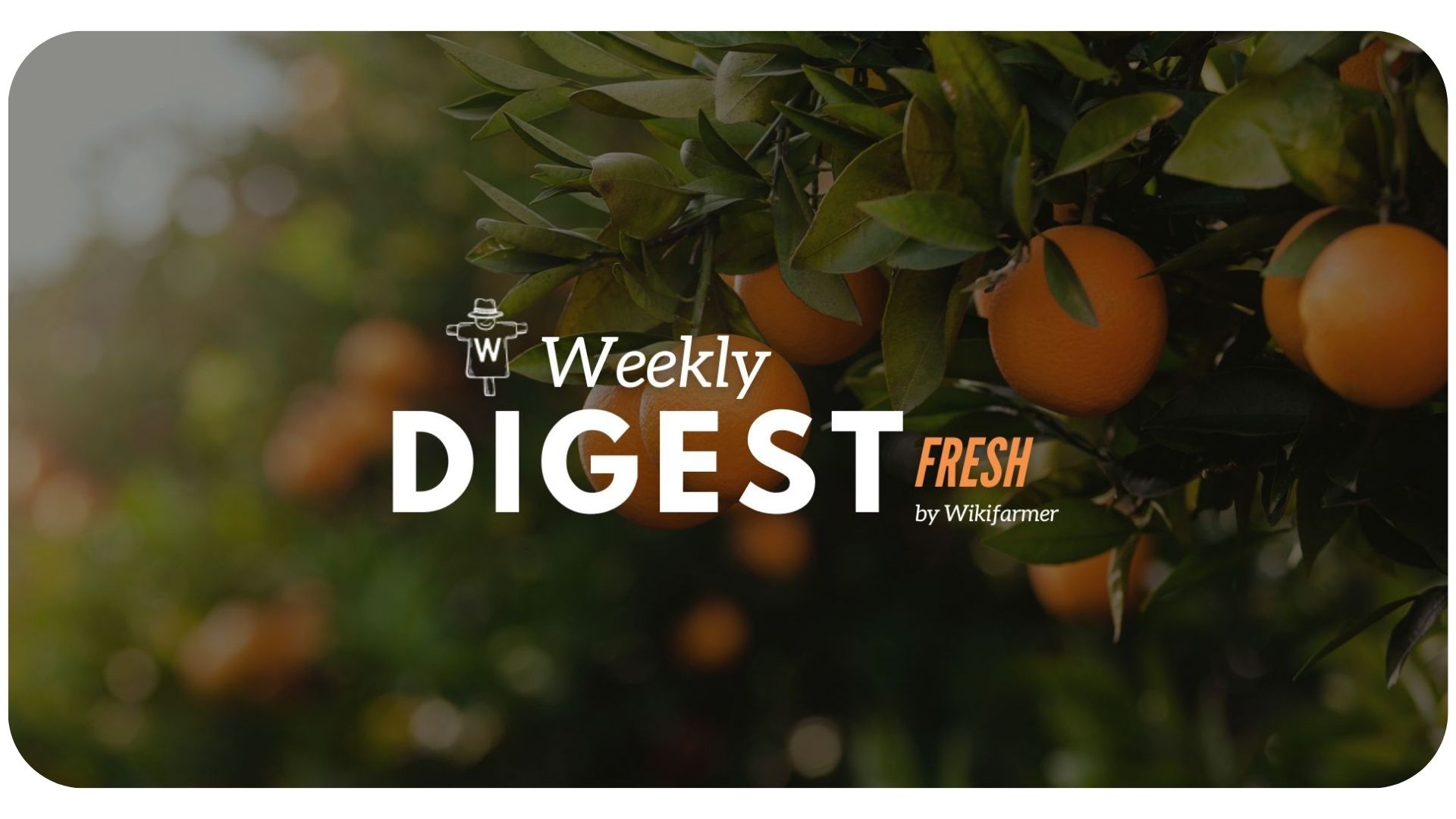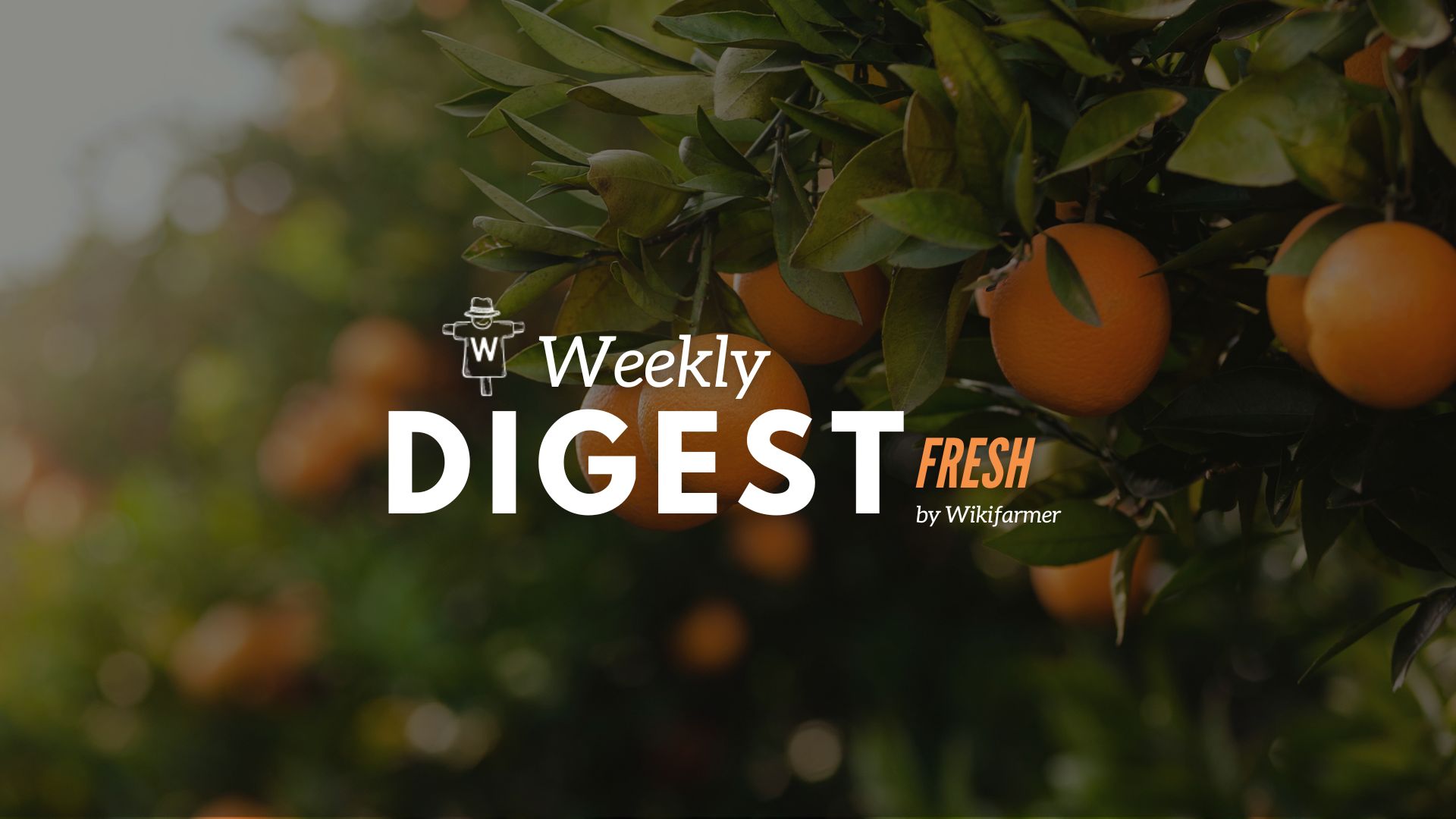Orange Market Digest w1

Weekly Orange Market Updates
Back from a two-week break
A lot has happened in the oranges sector since our most recent fresh produce digest was released on December 15th. Developments span various aspects of the market; the current situation of the orange harvest and anticipated final available stocks has become clearer, as has demand from final consumers and food processing units.
Additionally, movements on the international trade frontier provide insight into the expected equilibrium among players from various countries to meet the needs of consumers and manufacturers. All of these developments are reflected in the product's prices.
Harvest Updates - Meteorological Events
As we have shared in previous reports, although orange production levels are expected to show an overall increase in the current season, this is not the case for Greek and Spanish orange yields. As those countries are major players in the sector, this is estimated to reduce total production levels in the EU by 2%.
Portugal is also expected to experience a drop in the 2023/24 season, while Italy is projected to see an increase. However, this increase will not be significant enough to counteract the overall negative trend in the EU's production volumes.
According to the United States Department of Agriculture's latest EU Citrus Annual Report, the common denominator in the reported supply drop is drought due to lack of rainfall as well as extended periods of unusually high temperatures in the previous months.
-1.jpg?upscale=true&width=520&upscale=true&name=Untitled%20design%20(16)-1.jpg)
These factors resulted in reduced yields, smaller orange sizes, and lower quality of the produce. Italian farmers, despite facing droughts, managed to maintain high-quality standards by relying heavily on irrigation systems, which constitute a significant source of operational cost; In addition, they had to bear the burden of high energy costs, such as fuel and electricity, as well as the expense of fertilizers and plant protection products.
Due to the increased costs mentioned above, the expansion of orange planting areas has been restricted, which can be seen in the graph provided by FAS-Europe shows. However, the producer prices have increased, which has helped relieve them from the strain of the low margins they experienced during the poor season last year.

Consumer Demand for Fresh and Processed Oranges
The same report informs us that consumer demand for fresh fruits is expected to falter against the positive price trend since consumers are showing high price sensitivity against the specific produce.
.jpg?upscale=true&width=1120&upscale=true&name=logos-top_graphics%20(12).jpg)
It is expected that a lesser quantity of citrus fruits will be used for processing, due to the decrease in consumer demand for the product. This decline is attributed not only to inflation but also to the rise in competition from alternative juices, particularly those made from tropical fruits. As a result, the demand for manufacturing purposes is also expected to decrease.
International Oranges Trade
Closing the citrus season in the southern hemisphere, European produce will most likely dominate in the EU markets - however, the EU will remain a net importer of them (as of all citrus fruits), and imports are expected to gain even more weight against exports, due to supply shortfalls in the most important EU producing countries.
As a result, Mediterranean regions such as Italy are expected to benefit from higher exports to Northern European countries that are facing a shortage of oranges. However, as the demand for oranges decreases domestically, there is a likelihood of a reduction in overall import volumes despite the imports covering the supply-demand gap up to a certain point.
Some wholesale fruit operators have gone far enough to even partner with direct competitors of theirs from third countries to ensure a steady supply of oranges. This is particularly true for Spanish operators who have bypassed the established Dutch businesses that market Egyptian produce in Europe and beyond. Instead, they are directly cooperating with their main non-European counterparts, which has improved their market outlook despite the crisis in the Red Sea .
Of course, under these circumstances, high transparency in the inner workings of agricultural supply chains is needed here to prevent cases of fraud against end consumers.
Main Price Movements in the EU
The European Commission’s Directorate-General for Agriculture and Rural Development shares weekly data on the wholesale prices for oranges in its member states. The data for the 2 latest weeks it has information on are as follows:

All in all, the contrasting pressures on availability and prices coming from the frontiers of production, consumption, and international trade leave us unsure regarding the stable level at which the market will reach its equilibrium by the end of the season.
.png?width=450&height=87&name=New%20Logo%20(1).png)
